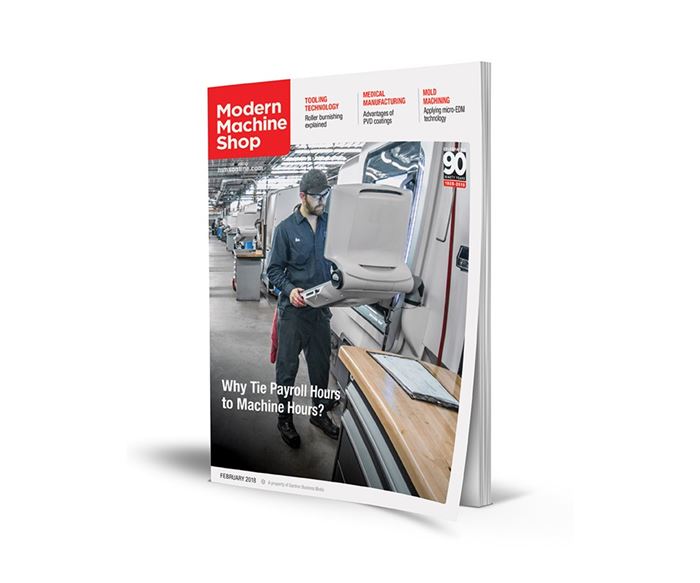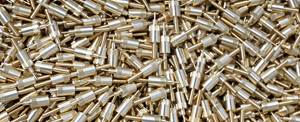MMS Looks Back: 2010s - How Far Will Digital Advances Go?
Shops now linking their capabilities into unified systems are taking the first steps on a journey with no known destination. In media, too, we are asking our own version of this question. This story is part of our 90th anniversary series.
Share




We have been looking back through the years to celebrate nine decades of Modern Machine Shop … and now we come to this decade, the 2010s, and the current year, 2018.
It is too soon to know what part of our experience will catch the future’s attention. But one of the features of this decade is the way it began: still reeling from the one preceding it. The Great Recession left shops struggling to return to their previous levels of success, and the 2010s began with many of them still on that upward climb. Then, at a certain point during this decade, a threshold was crossed: Manufacturers regained their previous levels and kept going.
How are shops changing now and where are they headed? This year, we saw a clue. Our January issue, February issue and March issue cover stories all reported on shops making significant investments toward bringing their equipment and capabilities together into unified digital systems. The repetition of this digital theme was not our intent. For our first cover story of the year, for example, we aimed to report on a shop’s success with transitioning to machining from solid as a replacement for relying on casting. But committing to a system of monitoring machine-tool performance and responding to the data proved vital to an approach that is now more reliant on CNC machining.
As for where this development of digital technology will go, I think we can see clues to that in other industries. In retail, for example, a third-party provider might seamlessly fulfill an order placed through Amazon. We are already accustomed to this. If manufacturers’ internal digital integration can naturally extend into external integration as well, we might see shops as nodes within data-sharing supply chains that respond to and fulfill part orders as seamlessly as the integration in retail already shows. A term in 2018 for talking about the promise of shifts such as this is “Industry 4.0.” What currency will that term have in the decades to come?
The advance of digital technology touches our awareness in one other way as well. In media, of course, digital technology has also made advances, meaning we have decisions to make. And in 2018, one of those decisions was the choice to invest in our print magazine. We made its dimensions bigger for only the second time in its history, allowing us to redesign and improve its graphic presentation. I explained this move in a recent post, but the reason amounts to opportunity. Certainly readers can now stay informed digitally and we need to serve them with digital media, yet a publication produced with care remains the most effective resource we have found for reaching the awareness of manufacturing leaders and informing their choices, a resource that—in the current age—is all the more appreciated. Monitoring and responding to a shop’s machining performance data demands a fully digital approach, but conveying ideas and insights about manufacturing technology argues for something more. That is why I am confident we will celebrate our 100th anniversary still serving our audience through various media including a print magazine, and I will look forward to that chance to look back with you once again.
Related Content
Reinventing a Precision Shop With a Data-Driven Mindset
When this machine shop lost 90% of its business within three months, a reinvention was in order. Here's how it survived after quickly falling on hard times.
Read MoreProtecting Your Automation Investments
Shops need to look at their people, processes and technology to get the most of out their automation systems.
Read MoreGive Job Shop Digitalization a Customer Focus
Implementing the integrated digital technologies and automation that enhance the customer's experience should be a priority for job shops and contract manufacturers.
Read MoreSwiss-Type Control Uses CNC Data to Improve Efficiency
Advanced controls for Swiss-type CNC lathes uses machine data to prevent tool collisions, saving setup time and scrap costs.
Read MoreRead Next
Registration Now Open for the Precision Machining Technology Show (PMTS) 2025
The precision machining industry’s premier event returns to Cleveland, OH, April 1-3.
Read MoreSetting Up the Building Blocks for a Digital Factory
Woodward Inc. spent over a year developing an API to connect machines to its digital factory. Caron Engineering’s MiConnect has cut most of this process while also granting the shop greater access to machine information.
Read MoreBuilding Out a Foundation for Student Machinists
Autodesk and Haas have teamed up to produce an introductory course for students that covers the basics of CAD, CAM and CNC while providing them with a portfolio part.
Read More

































